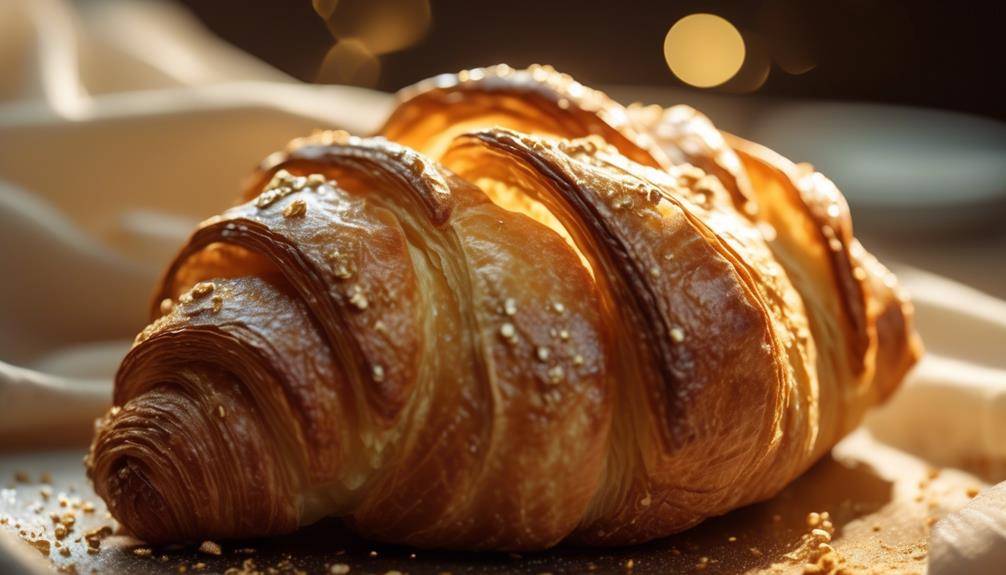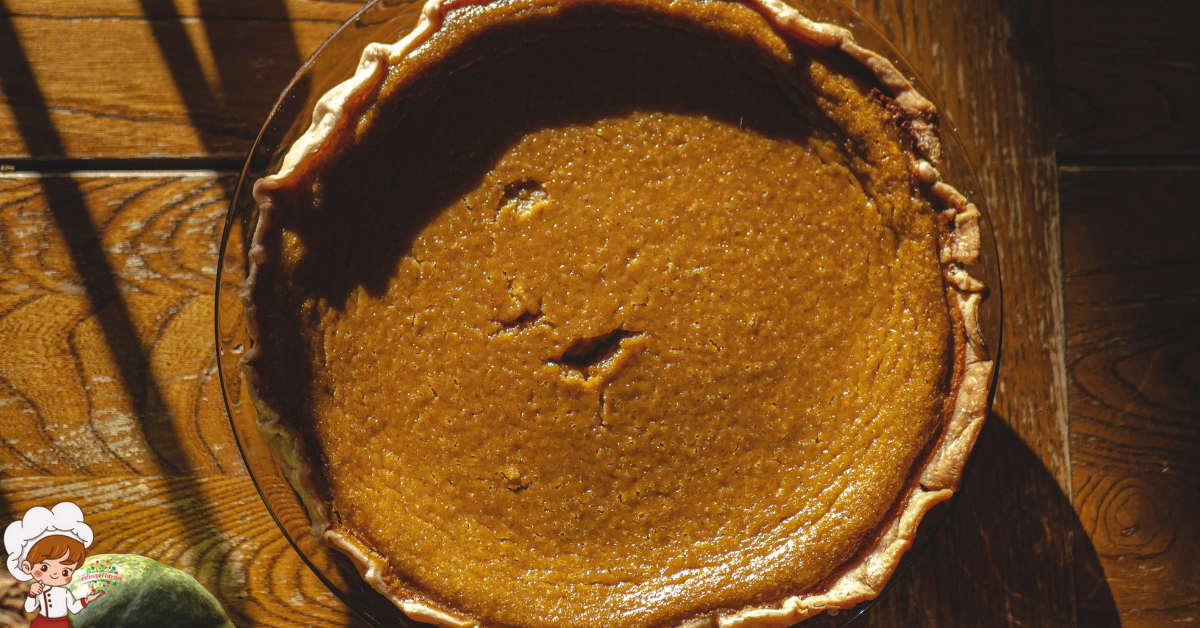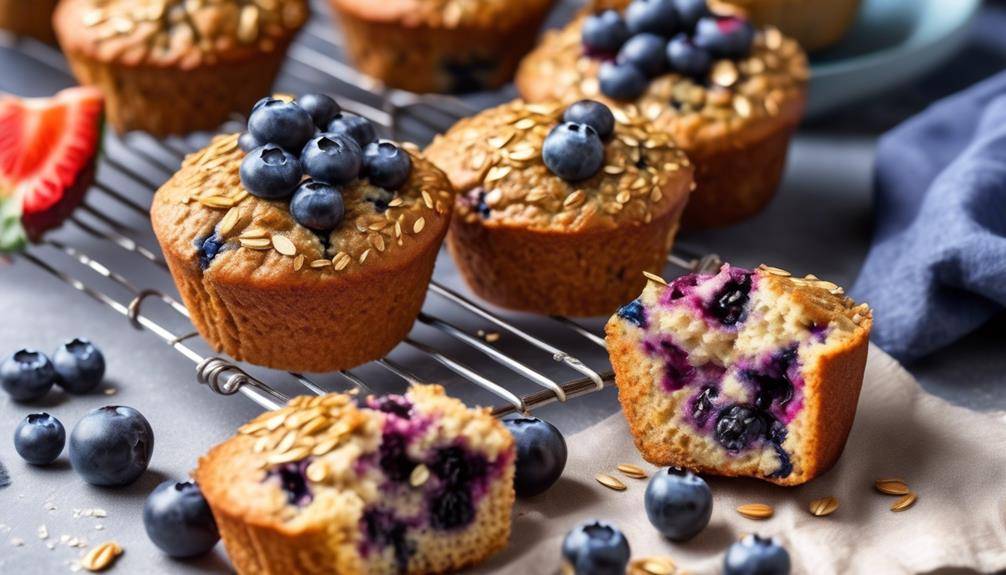Why Do Croissants Turn Out Crispy And Buttery

Why Do Croissants Turn Out Crispy And Buttery; You’ve probably noticed that when you bite into a croissant, there’s something special about its texture. It’s not just soft or flaky, but rather, it has this delightful crispiness that leaves you wanting more. Have you ever wondered why croissants turn out so crispy and buttery? Well, let’s unravel the secrets behind this delectable pastry and explore the fascinating science and artistry that goes into creating the perfect croissant. Get ready to embark on a journey that will leave you craving for more.
The Role of Butter in Croissant Texture
Butter plays a crucial role in determining the crispy and buttery texture of croissants. Its contribution to achieving flakiness cannot be overstated. When making croissants, the quality and type of butter used greatly affect the final result.
To understand the role of butter in croissant texture, it is important to know that croissants are made using a technique called lamination. This involves folding layers of butter into the dough, creating alternating layers of fat and dough. During baking, the butter melts, creating steam that lifts and separates these layers, resulting in the characteristic flakiness.
The choice of butter is essential for achieving the desired texture. High-quality butter with a high fat content is preferable, as it melts more evenly and produces a richer flavor. The butter should also be cold and firm to ensure that it remains in distinct layers during the lamination process.
The amount of butter used is also crucial. Too little butter will result in a less flaky texture, while too much can cause the croissant to become greasy. Achieving the perfect balance is key.
Additionally, the temperature of the butter plays a significant role. The butter should be slightly softened but still cold to the touch. This allows for easier incorporation into the dough while maintaining the necessary structural integrity.
Understanding the Flaky Layers of Croissants
To understand how croissants achieve their iconic flaky layers, it is important to examine the lamination process and the interaction between the dough and butter. The flaky layers of a croissant are created through a technique called lamination, which involves folding and rolling layers of dough with butter. This process creates alternating layers of dough and fat that result in the characteristic flakiness of the croissant.
When making croissants, the dough is initially mixed and kneaded to develop the gluten, which gives the croissant its structure. The dough is then rolled out into a thin sheet and chilled. The butter, which should be cold but pliable, is then spread onto the dough. The dough is folded over the butter, creating a layer of dough-butter sandwich. This process is repeated several times, with chilling periods in between, to create multiple layers.
During baking, the butter in the croissant melts and creates steam. This steam creates pockets of air between the layers of dough, resulting in the flaky texture. The layers of butter also contribute to the croissant’s buttery interior, as the melted butter soaks into the dough, adding richness and flavor.
To achieve the perfect flaky layers, it is crucial to maintain the temperature of the butter and dough throughout the lamination process. If the butter is too soft, it will be absorbed by the dough, resulting in a less distinct layering. On the other hand, if the butter is too hard, it will not spread evenly, leading to uneven layers.
The Importance of Lamination in Creating Crispiness
Lamination plays a crucial role in achieving the desired crispiness of croissants. It is the process of creating layers of dough and butter through repetitive folding and rolling, resulting in a flaky and buttery texture. To achieve perfect layers in croissant dough, specific lamination techniques for flaky pastries are followed. Here are four key aspects to consider:
- Temperature control: Maintaining the right temperature during lamination is crucial. The dough and butter should be at similar temperatures, usually around 60°F (15°C), to prevent the butter from melting into the dough. If the butter melts, it will not create distinct layers, leading to a less crispy texture.
- Butter distribution: Ensuring even distribution of butter throughout the dough is essential for achieving uniform layers. The butter should be evenly dispersed during the lamination process to create consistent pockets of steam, resulting in a flaky texture.
- Proper folding techniques: Correctly folding the dough is vital for creating multiple layers. The dough is folded in a specific manner, usually in a letter-like shape, to create distinct layers. Each fold helps to trap air between the layers, contributing to the desired flakiness.
- Resting and chilling: Allowing the dough to rest and chill between each lamination step is crucial. Resting the dough allows the gluten to relax, making it easier to roll out, while chilling helps to solidify the butter, preventing it from melting during the subsequent folding and rolling stages.
The Effect of High Heat on Croissant Texture
When it comes to the texture of croissants, high heat plays a crucial role. The impact of high temperature on croissant texture is significant, as it creates the desired crispy and flaky exterior. The heat causes the butter layers to melt and steam, creating air pockets and separating the layers, resulting in a light and airy texture.
Heat and Texture
High heat plays a crucial role in achieving the desirable crispy and buttery texture of croissants. When exposed to high heat, the moisture level in the dough evaporates rapidly, creating steam. This steam causes the layers of dough to separate and puff up, resulting in the flaky texture of croissants. The heat also activates the yeast in the dough, causing it to produce carbon dioxide gas.
This gas further expands the layers of dough, contributing to the light and airy texture. The high heat also caramelizes the sugars in the dough, creating a golden brown crust that adds to the overall texture and flavor. To achieve the perfect croissant texture, it is essential to bake them at a high temperature, typically around 375°F (190°C), for a short period of time.
Impact of High Temperature
To understand the impact of high temperature on croissant texture, it is important to consider how the intense heat transforms the dough and contributes to its desired crispy and buttery qualities. When exposed to high temperatures, the croissant dough undergoes several important changes. Firstly, the heat causes the water present in the dough to evaporate, leading to a reduction in moisture content. This reduction in moisture allows the croissant to develop a crispy exterior during baking.
Additionally, the high temperature activates the yeast present in the dough, causing it to produce carbon dioxide gas. This gas gets trapped within the dough, resulting in the characteristic light and airy texture of a croissant. Moreover, the impact of humidity also plays a role in the final texture of the croissant, as it affects the rate at which moisture evaporates from the dough. Overall, high temperature, in combination with the role of yeast and humidity, contributes to the crispy and buttery texture that is characteristic of a well-made croissant.
The Science Behind Achieving a Golden Brown Crust
Achieving a golden brown crust on croissants requires a precise balance of temperature, moisture, and fat content. Understanding the science behind this process can help you master the art of making perfectly crispy and buttery croissants. Here’s what you need to know:
- The chemistry of browning: When croissants are baked, a series of chemical reactions known as the Maillard reaction occurs. This reaction between amino acids and reducing sugars present in the dough creates the desirable golden brown color and rich flavors. Controlling the temperature and moisture during baking is crucial for promoting this reaction and achieving the desired crust color.
- The role of yeast in crust formation: Yeast plays a significant role in creating the texture and structure of the croissant crust. As the dough ferments, the yeast consumes the sugars present, producing carbon dioxide gas that causes the dough to rise. This gas creates air pockets within the dough, resulting in a light and airy texture. Additionally, the yeast produces enzymes that break down the starches into simple sugars, providing the necessary fuel for browning during baking.
- Proper oven temperature: Preheating the oven to the correct temperature is essential for achieving a golden brown crust. A high temperature, typically around 200-220°C (400-425°F), creates a rapid and intense browning reaction. This quick browning helps to seal the outer layer of the croissant, trapping moisture inside and creating a crispy texture.
- Fat content: Croissants are made with a high-fat dough, usually containing butter, which contributes to the desired crispy and buttery texture. As the croissants bake, the fat melts and coats the layers of dough, creating a flaky and tender interior while also contributing to the golden brown crust. The fat also helps to retain moisture, preventing the croissants from drying out during baking.
How Temperature Affects the Buttery Interior of Croissants
Maintaining precise temperatures throughout the baking process is crucial for achieving the perfect buttery interior of croissants. Temperature plays a significant role in both the flavor and rise of these delectable pastries.
When it comes to flavor, the temperature of the dough and butter is of utmost importance. The dough needs to be chilled while incorporating the butter, as this helps create distinct layers. The cold butter, when layered with the dough, creates pockets of steam during baking. These pockets give rise to the characteristic flakiness of croissants. If the temperature is too high during this process, the butter will melt and mix with the dough, resulting in a less defined layering and a compromised texture.
The temperature also affects the rise of the croissants. During proofing, where the dough rests and ferments, the ideal temperature is around 75°F (24°C). This allows the yeast to produce carbon dioxide, which causes the dough to rise. Higher temperatures can speed up fermentation, but the dough may become overly soft and difficult to handle. On the other hand, lower temperatures can slow down fermentation, resulting in a denser texture.
Furthermore, when baking the croissants, a temperature of around 400°F (200°C) is recommended. This high heat allows for the rapid expansion of the dough, creating a light and airy interior. If the temperature is too low, the croissants may not rise properly and could end up dense and undercooked.
The Art of Properly Proofing Croissant Dough
Properly proofing croissant dough is a critical step in achieving the desired texture and rise of these delectable pastries. The process of proofing involves allowing the dough to rise after shaping but before baking. This allows the yeast in the dough to ferment and release carbon dioxide, creating air pockets and giving the croissants their light and flaky texture. To ensure successful proofing, it is important to follow proper proofing techniques and activate the yeast effectively.
Here are some key tips to properly proof croissant dough:
- Temperature control: Maintain the dough at a controlled temperature during proofing. Ideally, the temperature should be around 75°F (24°C). This allows the yeast to ferment at an optimal rate and produce the desired amount of carbon dioxide.
- Time management: Give the dough enough time to proof. This can vary depending on factors such as the temperature of the dough and the strength of the yeast. Generally, croissant dough should proof for about 1 to 2 hours, or until it has doubled in size.
- Humidity control: Ensure the dough is proofed in a humid environment. This can be achieved by covering the dough with a damp cloth or placing it in a proofing box. The humidity helps prevent the dough from drying out and forming a hard crust during proofing.
- Yeast activation: Activate the yeast properly before incorporating it into the dough. This can be done by dissolving the yeast in warm water or milk, along with a small amount of sugar. The mixture should be left to stand for a few minutes until it becomes foamy, indicating that the yeast is active and ready to be used.
Why Do Croissants Turn Out Crispy And Buttery; Frequently Asked Questions
Can I Substitute a Different Type of Fat for Butter in Croissant Dough?
Yes, you can substitute a different type of fat for butter in croissant dough. For example, you could use margarine instead. However, keep in mind that this may affect the final texture and flavor of the croissants.
Are There Any Alternative Techniques to Achieve Flaky Layers in Croissants?
To achieve flaky layers in croissants, alternative techniques include using a laminating process, where dough and butter are folded repeatedly. This creates distinct layers, resulting in a flaky texture.
How Long Should I Bake Croissants to Achieve the Perfect Golden Brown Crust?
To achieve the perfect golden brown crust, bake your croissants for around 15-20 minutes at 375°F. This baking time allows the layers to cook evenly and develop a crispy texture while retaining a buttery flavor.
Can I Use a Lower Temperature to Bake Croissants and Still Achieve a Crispy Texture?
Using a lower temperature to bake croissants may result in a softer texture. To achieve a crispy texture, it’s recommended to bake croissants at a higher temperature, allowing the dough to fully cook and develop that desirable crispy and buttery exterior.
Is It Possible to Speed up the Proofing Process for Croissant Dough Without Compromising the Final Result?
To speed up proofing for croissant dough without compromising the final result, you can use an accelerated proofing method. However, this may affect the texture and flavor compared to the traditional proofing method.
Conclusion
In conclusion, the crispy and buttery texture of croissants is achieved through a combination of factors. The high butter content in the dough creates a rich and flavorful taste, while the lamination process creates the flaky layers that contribute to the crispiness. Baking the croissants at high heat creates a golden brown crust, adding to the overall texture. Additionally, proper proofing of the dough ensures a buttery interior. Understanding the science behind these processes is key to achieving the perfect croissant.








